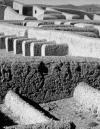Abstract
The use of earth as a constructive material has had a widediffusion in the world since very old times. Nevertheless, in spiteof the ecological and cultural qualities of the earthen architecture,contemporary society rejects it because they consider it obsoleteor insecure. This perception has as one of its origins the loss of thetraditional constructive knowledge that sustained it and the lack ofmodern studies that can replace it. The information referring to theconstructive technologies usually is dispersed in specialized publicationsthat are not widely spread. In order to manage to revalue thepatrimonial earthen construction and to generate new buildings, itis necessary to understand its qualities and limitations. The presentarticle exposes a series of data about the earth characterization,designing criteria and constructive processes of the three mostknown systems: adobe, rammed earth and bahareque.Apuntes is registered under a Creative Commons Attribution 4.0 International Public License. Thus, this work may be reproduced, distributed, and publicly shared in digital format, as long as the names of the authors and Pontificia Universidad Javeriana are acknowledged. Others are allowed to quote, adapt, transform, auto-archive, republish, and create based on this material, for any purpose (even commercial ones), provided the authorship is duly acknowledged, a link to the original work is provided, and it is specified if changes have been made. Pontificia Universidad Javeriana does not hold the rights of published works and the authors are solely responsible for the contents of their works; they keep the moral, intellectual, privacy, and publicity rights.
Approving the intervention of the work (review, copy-editing, translation, layout) and the following outreach, are granted through an use license and not through an assignment of rights. This means the journal and Pontificia Universidad Javeriana cannot be held responsible for any ethical malpractice by the authors. As a consequence of the protection granted by the use license, the journal is not required to publish recantations or modify information already published, unless the errata stems from the editorial management process. Publishing contents in this journal does not generate royalties for contributors.


